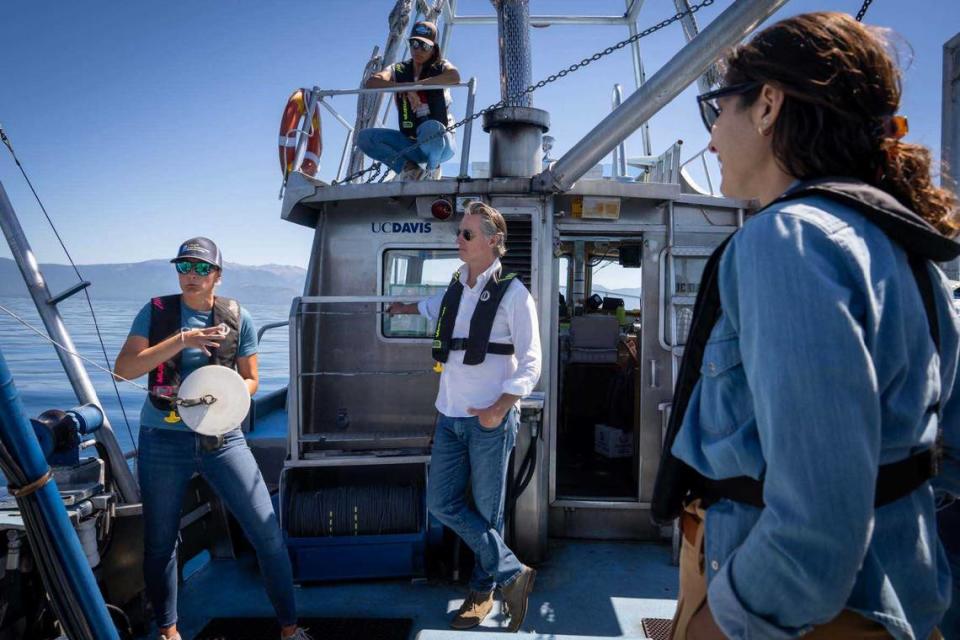Lake Tahoe’s clarity sees improvement in winter but seasonal shifts widened in 2023 report
The waters of Lake Tahoe saw some of its clearest winter conditions and murkiest summer conditions on record in 2023, following a yearslong trend of rapid changes between seasons.
According to UC Davis researchers’ latest annual report on the health of the lake, Lake Tahoe’s winter waters were the clearest they had been since 1983. The measured visibility was the 10th best on record for the six decades that scientists have been monitoring the lake, improving nearly 20 feet from 72.2 feet in 2022 to 91.8 feet in 2023.
Summer conditions, however, saw the fifth murkiest waters on record with an average of 53.5 feet, down from 68.9 feet in 2022. The overall average lake clarity dropped slightly, by less than four feet from the previous year.
The observed conditions follow a year-to-year pattern of clear winter conditions and murky summer conditions, the report said, but the heightened clarity in winter months can be attributed to deep lake mixing, which brings cold, clear water up from the bottom of the lake to the surface.

Meanwhile, during the spring, plankton growth and particles brought by runoff from winter snowfall contribute to the decreased clarity in the summer months.
Scientists also said that microplastics may affect the lake, though it was unclear by how much.
“Research has confirmed the presence of microplastics in Tahoe, and we know small pieces of plastic have the potential to affect clarity, but we don’t know their relative contribution to Lake Tahoe,” said Alexander Forrest, interim director of the UC Davis Tahoe Environmental Research Center.
Researchers monitor lake clarity by lowering a 10-inch white disk, called a Secchi disk, into the water and measuring the lowest depth at which it still remains visible. Clarity is only one benchmark used to determine the health of the lake, but an important one, researchers said.




